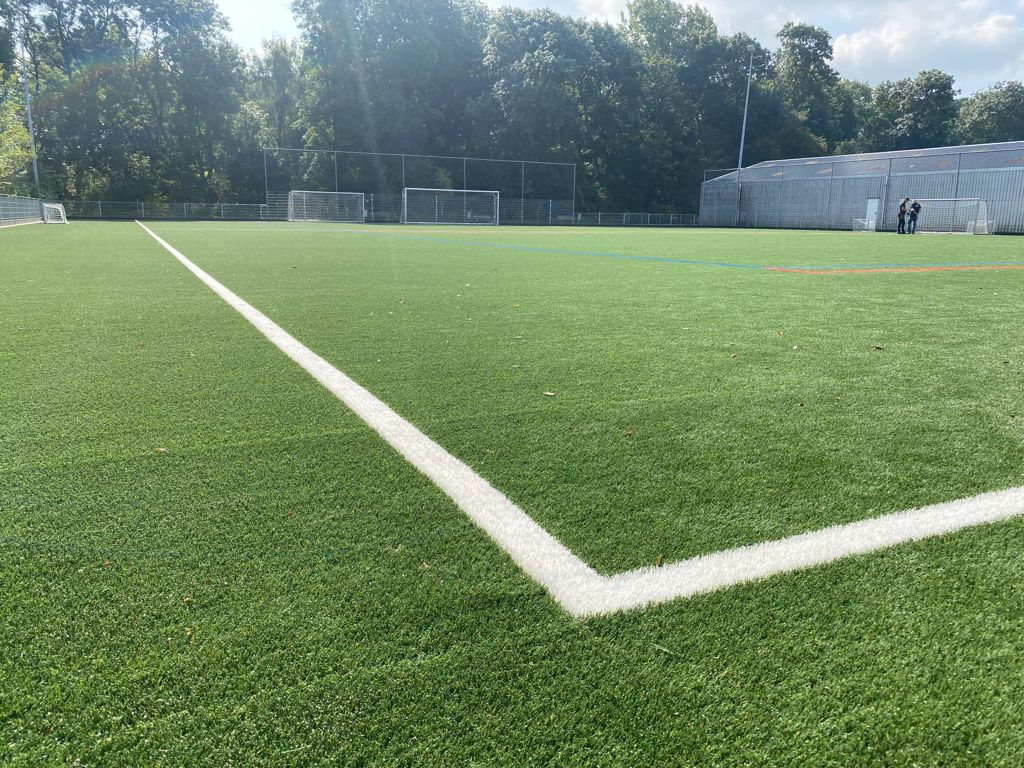Sekisui Alveo, European manufacturer of high-quality polyolefin foams, has expanded its well-known Alveosport product line. Alveosport NUT 3011-14 is a new foam designed especially for use as a shockpad in artificial turf systems designed without infill. The innovative material not only meets the technical and quality requirements for sports fields, it presents an alternative to the questionable rubber infill used in many artificial turf systems.
Various artificial turf systems in use today incorporate rubber infill in order to achieve the desired performance characteristics. Problem is, this ground rubber is a material of concern. It impacts both the environmental and health, and this has been a topic of discussion at the European level. Artificial turf systems designed without the infill appear to be a promising alternative.
New shockpad with enhanced performance
In artificial turf systems without infill, more of the vertical sports performance must be provided by the substructure. The shockpad beneath the artificial turf carpet must be designed for this purpose. Alveosport NUT 3011-14 is a new product specially developed to meet these technical requirements. The chemical composition, in combination with the physical design of the shockpad, results in an excellent balance of shock absorption, vertical deformation, and ball bounce – directly after installation as well as throughout the lifetime of the turf system.
Pioneering installations
Alveosport NUT 3011-14 was used in a new non-infill football turf built this year for DSV Concordia in Delft, the Netherlands. In this system, FieldTurf Ultra 360 non-infill carpet is installed over the shockpad. Rob Heusinkveld, Product Manager at FieldTurf Tarkett Benelux, explains the design: “This system is a real further development in the field of non-infill synthetic turf systems. Because there is no performance infill, most of the performance properties have to be provided by the shockpad. Alveosport is our go-to shockpad for synthetic systems because of its proven technical performance – so Alveosport NUT 3011-14, developed especially for use in non-infill systems, was an obvious choice for this turf.” In addition to this example, four non-infill synthetic turf fields based on Alveosport NUT 3011-14 were successfully installed in Norway last year.
Technical development
These pioneering installations as well as recent studies indicate that by optimizing test methods and standards, non-infill systems will be able to fully meet players’ expectations and the technical requirements of FIFA and other organisations. When this happens, non-infill systems are expected to become a high-performance alternative to football turf systems using performance infill. Sliding performance and shoe grip remain key points of attention as non-infill systems develop. As more clubs opt for non-infill systems, acceptance will grow and the system and components will be further developed. Sekisui Alveo’s leadership role in this trend towards healthier artificial turf systems is fully in line with the company’s mission of Innovation in Foam.
Alveosport: an all-round winner
In terms of installation, technical performance, and environmental impact, Alveosport is an all-round winner. Installing the shockpad is quick and easy. It can be done in one day under any weather conditions and requires neither special machinery nor skilled personnel. The cushioning significantly reduces the risk of injuries. In terms of environmental performance, Alveosport releases no harmful chemicals or gases known to pollute soil, water, or air.
Artificial turf systems without infill are even quicker to install, easier to maintain, and ultimately easier to recycle at the end of their service life.
Sound long-term investment
In many cases, the Alveosport shockpad can be reused when a field is being renovated. When the artificial turf wears out after a number of years, the owner only needs to invest in a new carpet. This saves significant costs. It also saves time, energy, and material – and minimizes the interruption so the players can return to a comfortable, healthy, high-performance field within a very short time.
